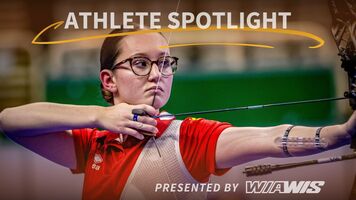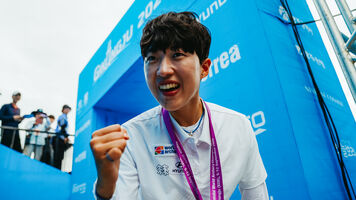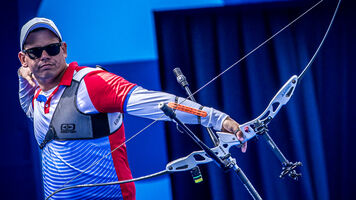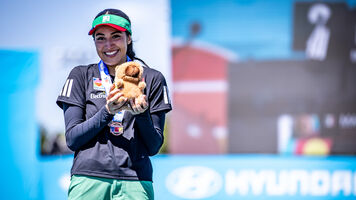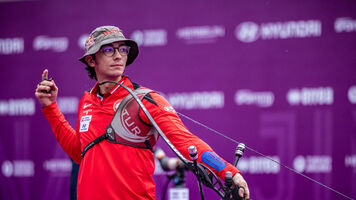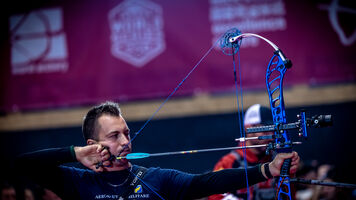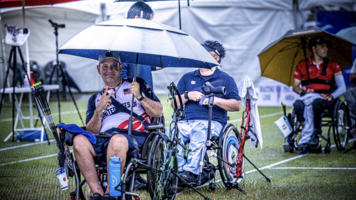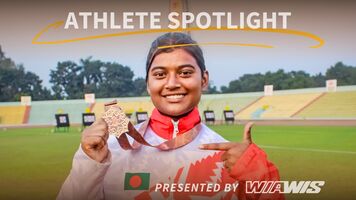Ella Gibson’s meteoric rise to the pinnacle of international archery
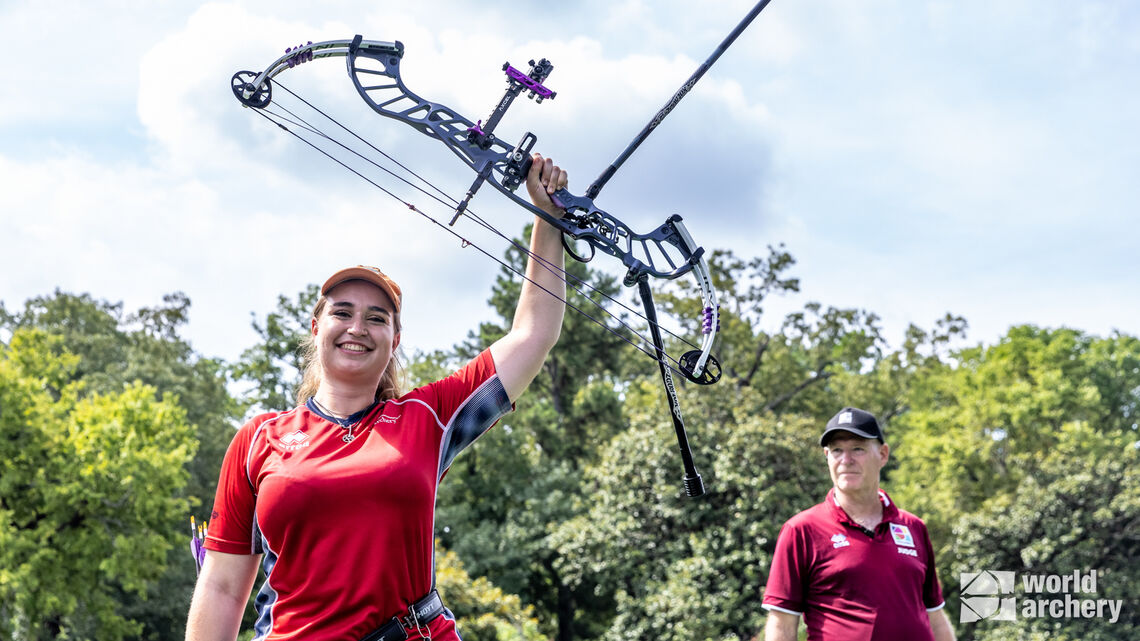
Ella Gibson became the world’s number one ranked compound woman with a triumphant victory at the World Games in Birmingham in July 2022.
The Brit, still just 22, secured that coveted top spot by beating Sara Lopez, then the world number one herself, in the compound women’s individual final at the multisport event. Immediately prior to the competition, after an extraordinary raid on podiums across the globe, she was ranked second, just a handful of points behind the Colombian.
While it may have just been another match for elite professionals – albeit for one of the discipline’s grander prizes – it felt more important than that.
After all, Lopez has accrued a record 1445 non-consecutive days as number one and is widely regarded as the greatest female compound archer of all time. Gibson – while promising in her own right – is still very much building her list of accolades.
One thing was abundantly clear. The win wasn’t a lucky break. After the extraordinary performances Gibson has delivered in 2022, it seemed more like the passing of a crown.
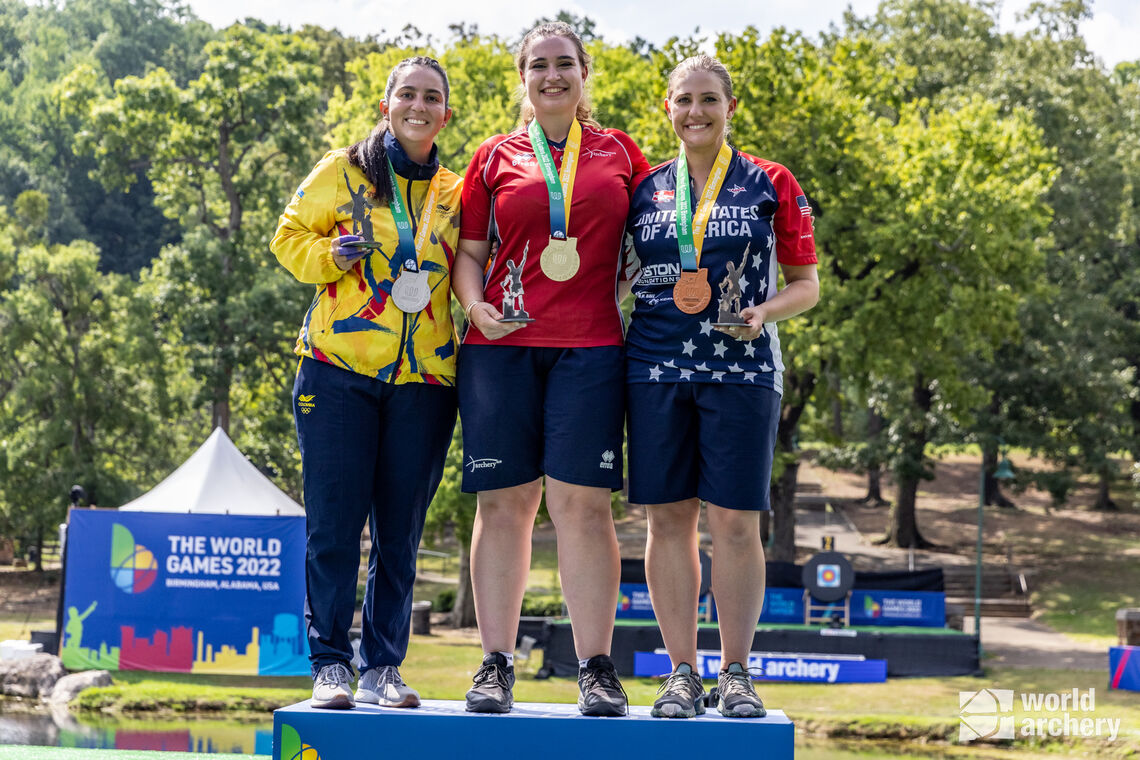
Speaking from her home in Gloucestershire, when asked how such a phenomenal rise in performance came to pass, Ella gave an insightful look into the mentality of a rising contender on the elite stage.
“It’s definitely not that I expected to win, or I know I will win. Because I don’t. A lot of the time, I walk onto the finals field expecting to lose, to be honest,” she said.
“It wasn’t about winning or being world number one, but more that I deserve to be where I am. It’s proving that each achievement I’ve made is not down to luck or an easy draw or people just falling around me, but down to the hard work and the commitment and the progress that I’ve made.”
It’s a me-against-the-world mindset.
“I figured if someone beats me and just outshoot my level, that’s okay, I will take my hat off and congratulate them,” she continued.
“But I was insistent that I won’t lose because I’ve lowered my level. That was the goal. Losing because of the person or the conditions, I would not be okay with.”
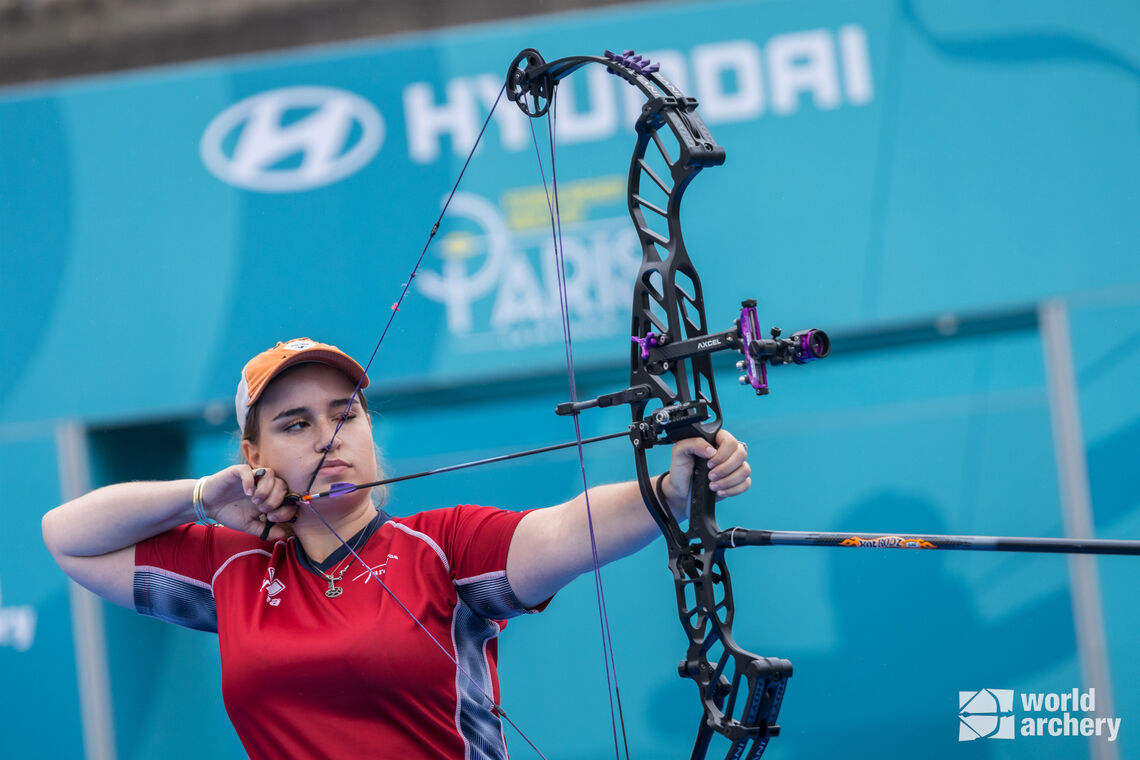
After that game-changing win in the USA, Ella followed up with another final-four match win over Lopez at the Hyundai Archery World Cup stage in Medellin – on the Colombian archer’s home turf. It was Ella’s third victory in three appearances on the tour in 2022.
She’s only the sixth archer in the 16-year history of the competition to win three legs in one year and the first since Lopez in 2016.
(And they’re on top of the European indoor title won in Slovenia in February, as well as the team gold collected at the outdoor continental championships.)
But the astonishing sequence of results almost seems like a byproduct of a meticulously planned and disciplined career; a career that began just five years ago.
Starting out as a recreational archer in her teens, Ella decided that her compound journey would be aimed squarely at the top.
“I’d reached my limit at the time with barebow. I’d won most competitions I entered and I got some national records, too,” she said. “I didn’t want to go to another tournament and only have one person to compete against. I wasn’t good at guessing distances for field, and I was told I was middle-aged to start serious recurve – I was 16!”
“But I could start compound. I’m naturally strong, so that would work well. And if I trained and worked hard, I knew I would be good.”
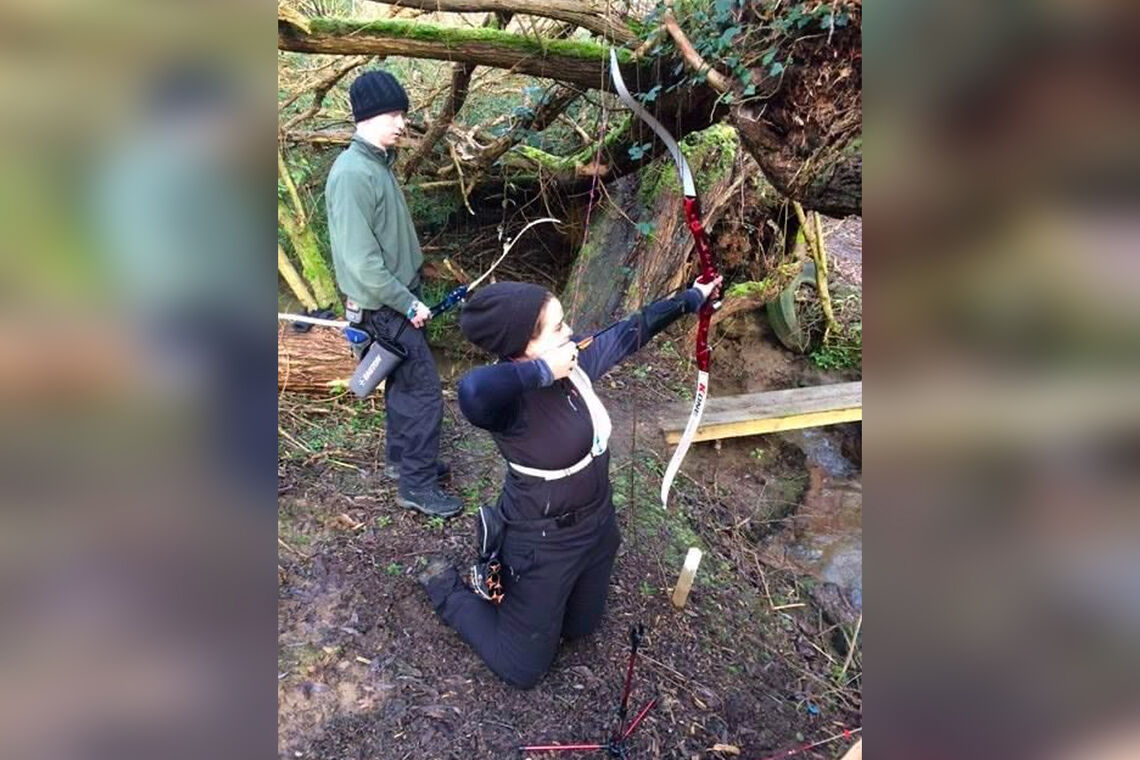
Gibson was lucky enough to live near Deer Park Archers in Gloucestershire, one of Britain’s better-known archery clubs.
As well as supporting Ella, coaches Steph and Dan Gill have influenced the rise of current Paralympic Champion Phoebe Paterson Pine, as well as several other young British compound internationals.
“There was a rule at Deer Park,” said Gibson. “If you start compound, you have to shoot a true back tension release. After you shoot it for a bit, and get some good habits with it, if they saw you were shooting properly, you could go out and buy a trigger.”
Back tension release aids execute when enough pressure is applied in the draw process, making the shot a surprise, while trigger release aids require the archer to engage a button – either subconsciously or by proactively clicking it.
“I think that was pretty important in a lot of ways, to make sure that you are shooting well with good technique and don’t form bad habits from day one,” she explained.
“That is something that was a big advantage for me. Most people starting archery go once or twice a week and then three or four years down the line, they say, ‘I actually enjoy competing, I want to do this’. I was different. I’d started barebow as a hobby but when I started compound, I started it with the focus of shooting for my country.”
Ella knew the end game before she’d even bought her first compound bow.
“Right from the get-go. That was my plan,” she continued. “It’s a big difference in mentality. I wanted to create a foundation and a shot that was going to work internationally and was going to be competitive.”
Just three months later, she shot a national record – and she’s never looked back.
Heading into the pandemic, she was a rookie international, having just won her first senior cap. On the return to elite competition, she was a contender.
“It’s been a kind of crazy journey. I went from a personal best of 663 to a personal best of 689. The following year, I started on 689 and by the end of it I was on 705,” she said.
“I wasn’t even sure where my level was because it was always changing, and my expectations and my goals were just everywhere.”
“The pandemic actually helped me a little bit, just to be able to shoot for like three or four months on my own to score and see where I was. Once I got to this year, I finally knew what my level was.”
As does the rest of the world, now, too.
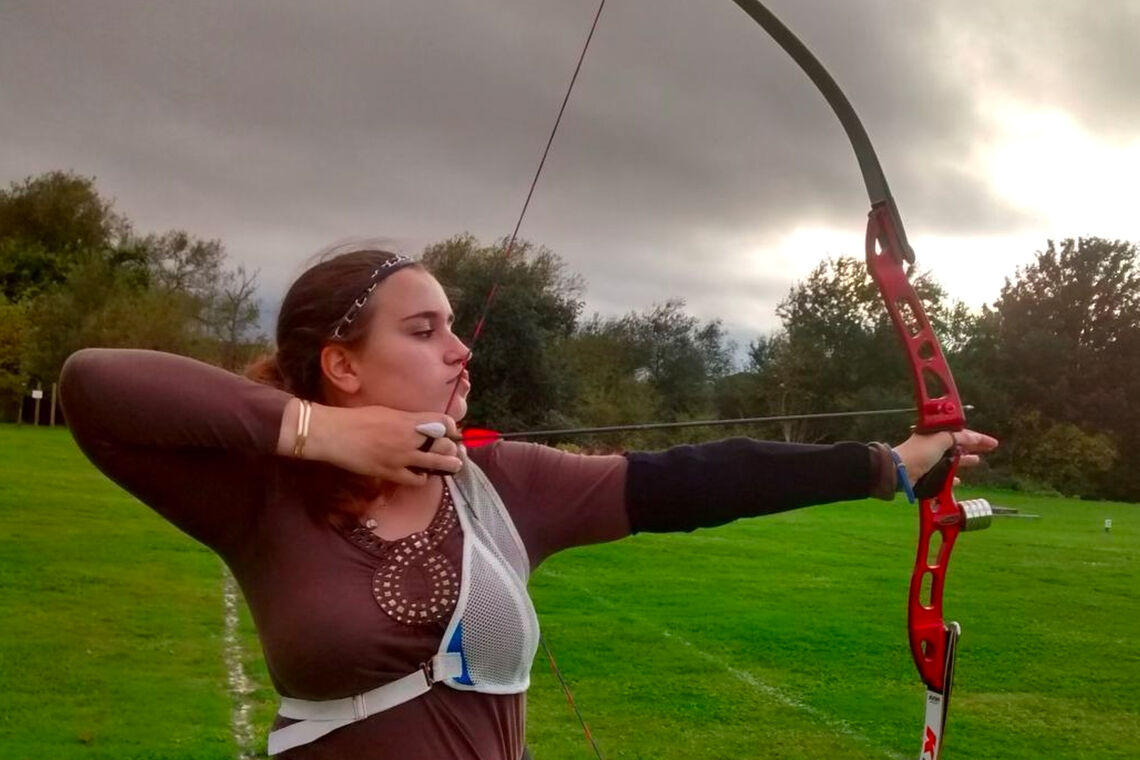
The drive to be successful apparently runs in the family.
“I’ve always been competitive,” she said, laughing. “My dad was into competitive sport. He owns his own business and probably takes half a day off in the whole year. My mum works really hard at her job. My brother’s an accountant and he works ridiculous hours.”
Ella’s words paint a picture of a determined, focused and unyielding personality, the kind that was perhaps necessary to dethrone an all-time great from the top of the world rankings.
“I always think that regret is probably the worst feeling,” said Gibson. “If I fail, I want to know that in 10 or 20 years, at least I tried as much as I could.”
“I’d rather give everything I can and still fail than wonder what if I’d just tried a little bit more? What if I’d just done this? I’d rather know that I did everything I could and it still didn’t work out.”
Ella had the support of a competitive family and British coaches Simon Scott and Jon Nott. Her performance continued to rise as she ramped up her training to volumes of up to 2000 arrows per week.
“There’s naturally a plateau when you get to certain levels of scores because you run out of places to go,” she said. It’s much harder to go from 705 to 710, for example, than it is 690 to 700.
“But it’s more just learning how to win, learning how to cope in different situations and learning how to be more consistent. It’s learning how to shoot those scores, even when you don’t feel your best.”
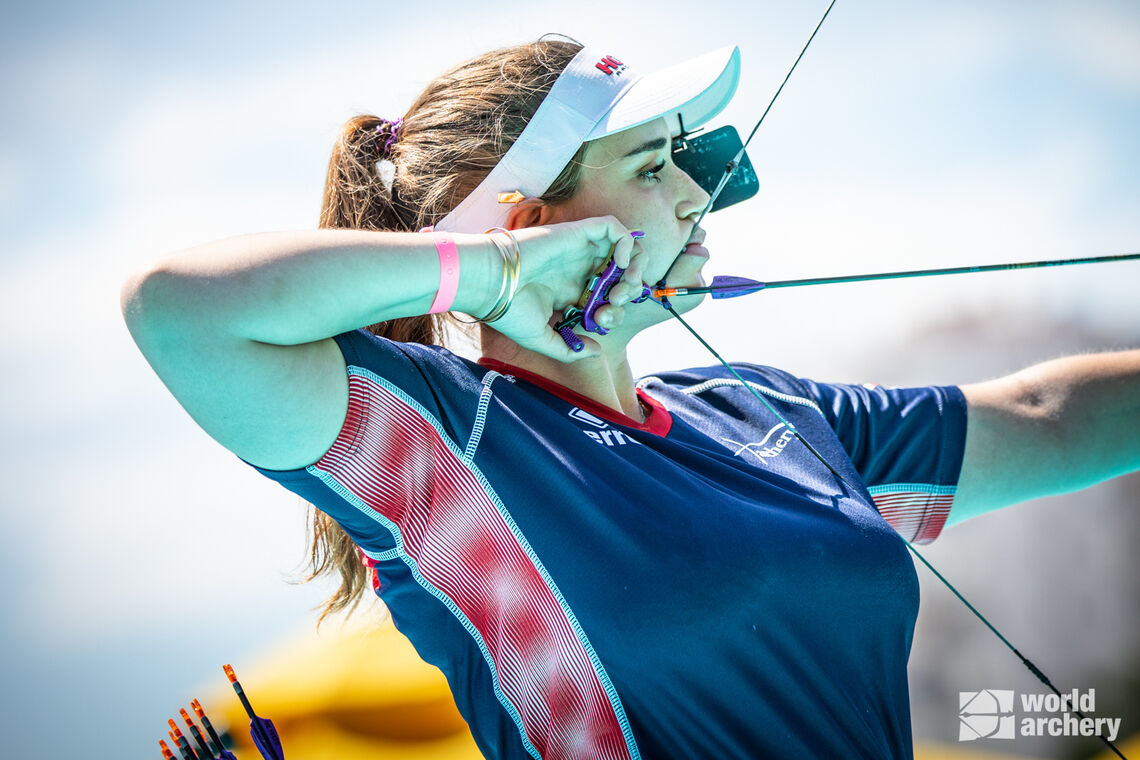
In 2021, with the United Kingdom still locked down and international travel becoming difficult, Gibson made the bold choice to essentially move to continental Europe to train and compete nomadically – with just a little help from the international network.
“I was frustrated and angry. I just decided that I wasn’t going to miss another season. I wasn’t going to miss the European Championships and I would figure it out,” she said.
Ella stayed with Mariya Shkolna and Pit Klein at their home in Luxembourg around the Europeans in Antalya, while Turkey was on a travel ban list for her home country. At the tournament, she would finish runner-up to experienced Dane Tanja Gellenthien.
“I just couldn’t seem to find the 10,” she said of the final. “But that event and that match got me my spot for the World Games this year. So if I hadn’t taken that chance, and done that event, and gone and stayed with Pit and Mariya, I wouldn’t have had that.”
“Things might have looked very different today.”
Once again, a bold move – and unwavering commitment – had paid off. But by this point, her approach to matchplay had also evolved.
“It’s important to know what you’re getting into and if some people have specific tactics, it’s important to know what you’re likely to experience,” said Gibson.
“If I know a particular archer is very slow on their shots, I’ll make sure that I know, and that I’m aware going in, and I will slow down my whole process. It’s not necessarily concentrating on who that archer is; it’s just knowing what you’re going to get.”
After winning the first and third stages of the 2022 Hyundai Archery World Cup in Antalya and Paris, Ella would have to face the top women in the world in Birmingham.
“I hadn’t beaten Tanja Gellenthien until the World Games. It wasn’t stressing me out, but it was frustrating for sure,” she said.
“I did it there, and I actually did it with a perfect 150. I was like, ‘we’re not playing this game again’. I’m not going to carry on making the same mistakes. That’s something I don’t do. Making new mistakes, that’s fine.”
It felt almost inevitable that a showdown between world numbers one and two would beckon.
Sara Lopez has crushingly dominated her era. Bow International magazine described her as ‘the Serena Williams of archery’. Lopez finally capped her career by securing the World Archery Champion title in Yankton in late 2021 – at the fifth time of asking.
She remained the final-level boss. With a ruthless ability to win matches.
To maximise the drama, the two would meet for the first time ever in international matchplay in the final in Birmingham. It was a classic sporting match-up – the experienced champion versus the young hotshot.
Gibson was fully prepared.
“I didn’t create a strategy to beat her,” said Ella. “It was more the other way around. I was aware of what her strategy is, so I was conscious to not let that get to me.”
“We all know that Sara shoots fast but she has a habit of speeding up her shooting in matches. By end three or four she shoots significantly faster than she does at the start of the match. Of course, when you’re shooting alternately, the speed you shoot can affect the speed of your opponent because the quicker you shoot, the less time your opponent has between shots.”
Archery is a very internal sport. Many elite athletes talk about only focusing on themselves when they’re competing in the arena. But there are ways to affect an opponent.
“Some people need a long recovery time. I have quite a fast shot and I actually probably slow down a bit on finals day,” said Ella. “But I am still significantly within the 20-second limit. So I know that I can wait five seconds before starting, and I usually only take 11 or 12.”
Add self-awareness to the traits – perhaps assets – that have made Gibson such a threat in the finals arena.
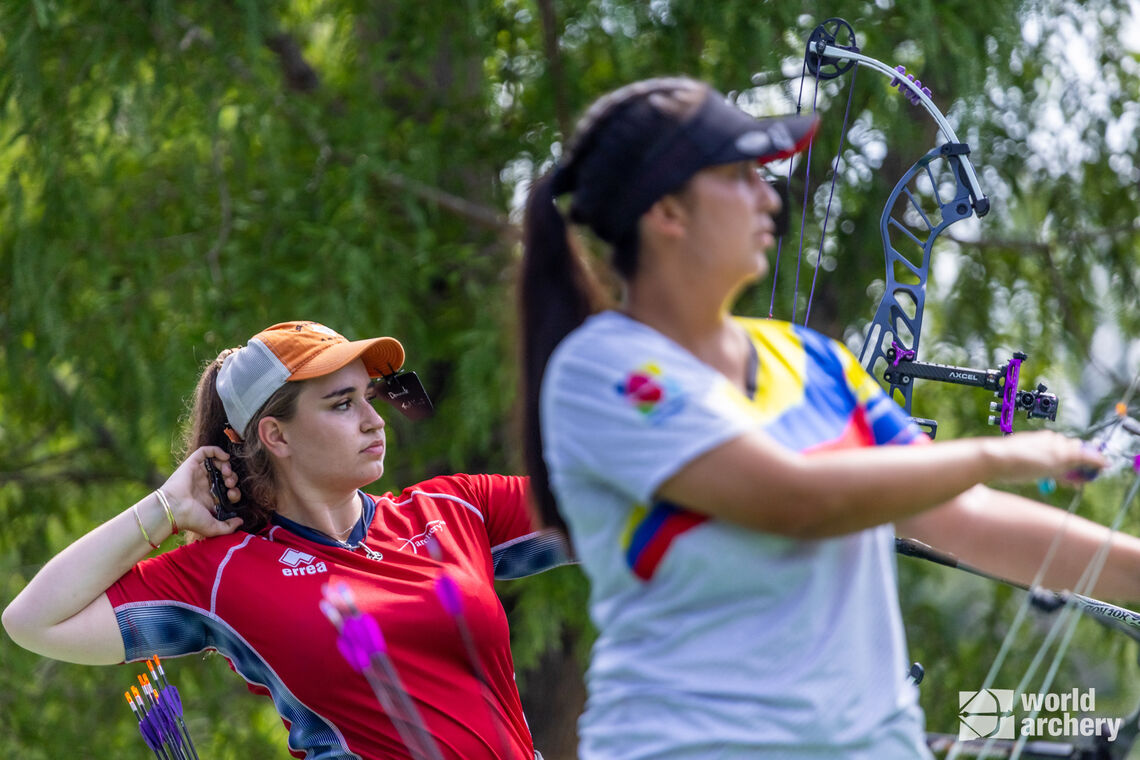
“In the final, I felt her speeding up. Your immediate reaction, of course, is just to lift the bow and draw,” recalled Ella, looking back to the World Games.
“But I went, ‘no, we’re not playing that game today’. I looked at the clock, I took a deep breath and then I drew up and it was a 10. After that, the match was pretty much under my control.”
Like Lopez has so many times over her illustrious career, Gibson dominated.
She didn’t drop a point until her eighth arrow of the match and only put two outside of the 10-ring through 15 arrows, winning 148-142 and claiming both an important title and the world number one spot from Sara.
“It was the same in Medellin,” the Brit continued. “She did it to a lesser degree but it still happened. You can see in her past matches as well, her opponents are rushed and they lose points.”
“They don’t give themselves the time to calm down and take the moments they need.”
Gibson will shoot at the World Archery Field Championships in Yankton in early October before the last major event of the season, her first Hyundai Archery World Cup Final in Mexico, where the 22-year-old will arrive the top seed and favourite.
Second-seeded – with a clear path to another big final showdown – is Lopez.
For the first time in nearly a decade, Sara Lopez is not a favourite to extend her incredible record of circuit titles. Gibson is odds on to secure her first.
Regardless of the outcome in Tlaxcala, even bigger things may be on the horizon.
In compound circles, there is a great deal of discussion about the discipline’s possible inclusion in the LA28 Olympic Games – an addition to the programme proposed by World Archery earlier this year.
“I have to say, I would be a lot happier if it was outdoors,” said Gibson. The initial application is for an indoor event. “I’m decent at indoors but I prefer outdoors.”
“Of course, I would absolutely still do it. It’s amazing that the bid has gone through. Whatever happens, I think it’s a great stepping stone for compound archery.”
Ella has had sustained success in 2022. Even if it is a passing of the torch, the results so far amount to just one season. Any possible Olympic event is still six years away – requiring another dynastic level of performance, should the current world number one hope to make history at that potential Games debut.
“I full anticipate still shooting in 2028 and to still be doing what I’m doing,” said Gibson. “I don’t plan on retiring in the foreseeable future. I’d only be 28 then, so still in a really comfy place.”
“I would 100% try to make the Olympics.”
With such dedication, commitment, self-awarness and drive, who’d put it past her.


